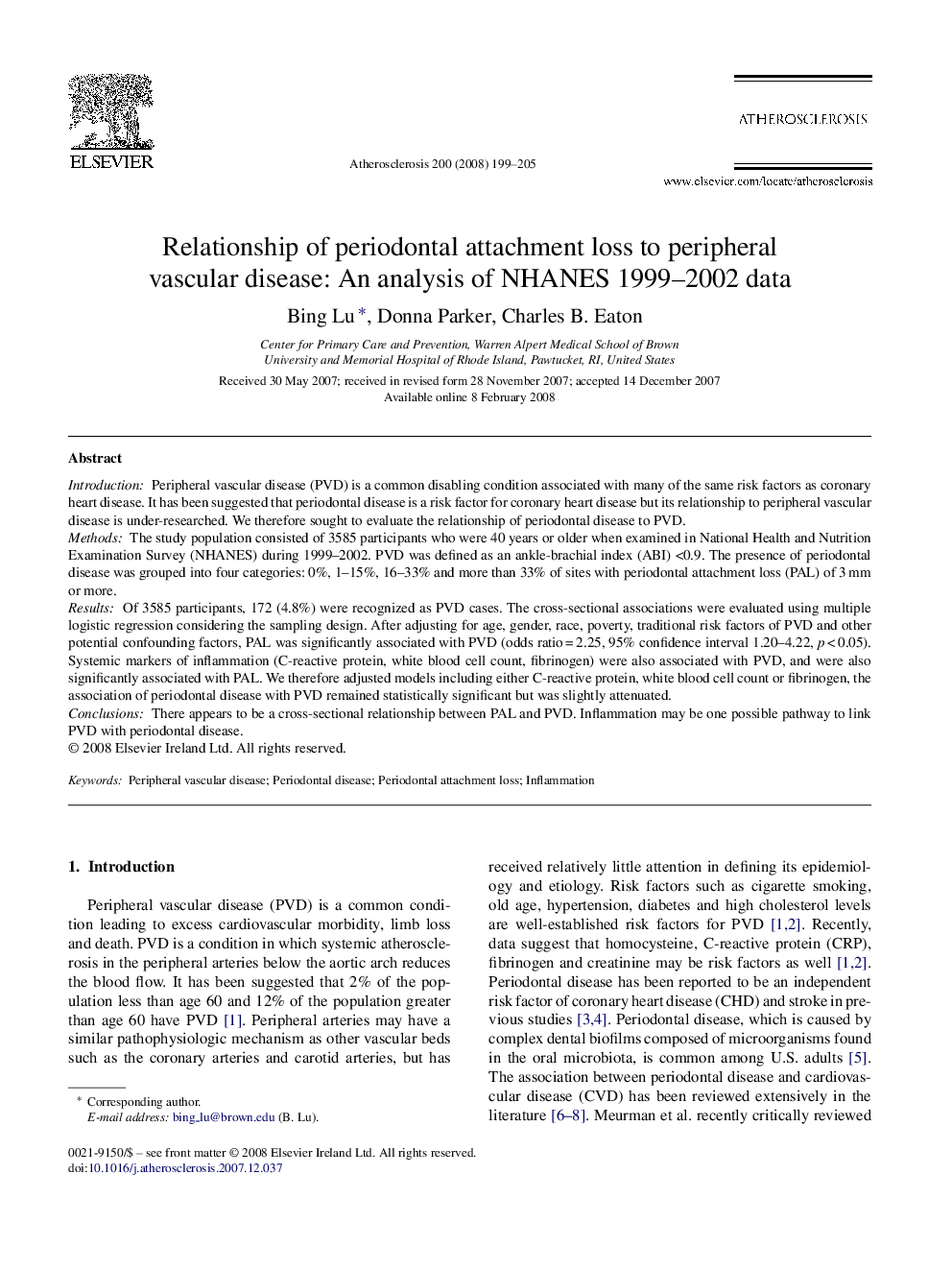| Article ID | Journal | Published Year | Pages | File Type |
|---|---|---|---|---|
| 2893970 | Atherosclerosis | 2008 | 7 Pages |
IntroductionPeripheral vascular disease (PVD) is a common disabling condition associated with many of the same risk factors as coronary heart disease. It has been suggested that periodontal disease is a risk factor for coronary heart disease but its relationship to peripheral vascular disease is under-researched. We therefore sought to evaluate the relationship of periodontal disease to PVD.MethodsThe study population consisted of 3585 participants who were 40 years or older when examined in National Health and Nutrition Examination Survey (NHANES) during 1999–2002. PVD was defined as an ankle-brachial index (ABI) <0.9. The presence of periodontal disease was grouped into four categories: 0%, 1–15%, 16–33% and more than 33% of sites with periodontal attachment loss (PAL) of 3 mm or more.ResultsOf 3585 participants, 172 (4.8%) were recognized as PVD cases. The cross-sectional associations were evaluated using multiple logistic regression considering the sampling design. After adjusting for age, gender, race, poverty, traditional risk factors of PVD and other potential confounding factors, PAL was significantly associated with PVD (odds ratio = 2.25, 95% confidence interval 1.20–4.22, p < 0.05). Systemic markers of inflammation (C-reactive protein, white blood cell count, fibrinogen) were also associated with PVD, and were also significantly associated with PAL. We therefore adjusted models including either C-reactive protein, white blood cell count or fibrinogen, the association of periodontal disease with PVD remained statistically significant but was slightly attenuated.ConclusionsThere appears to be a cross-sectional relationship between PAL and PVD. Inflammation may be one possible pathway to link PVD with periodontal disease.
